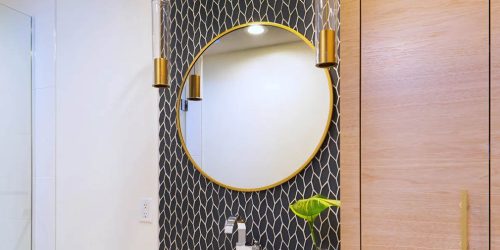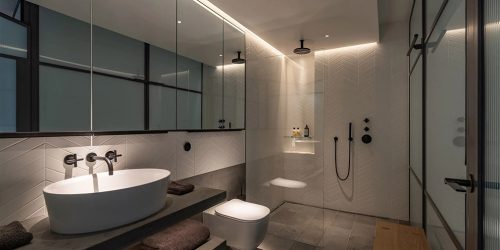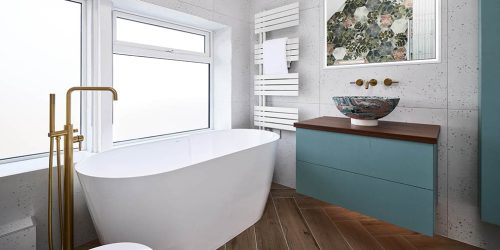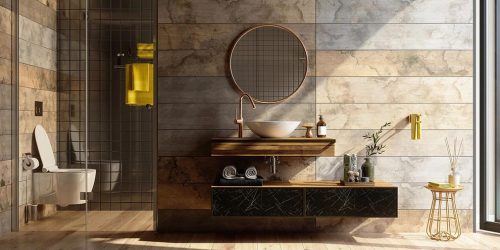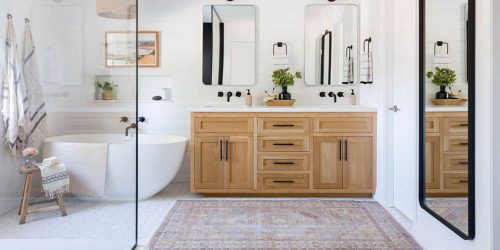How to Choose the Perfect Bathroom Vanity: Styles and Sizes
Choosing the perfect bathroom vanity is a crucial step in designing or renovating a bathroom. It not only provides essential storage and supports daily grooming routines but also serves as a focal point that can define the aesthetic of the space. With so many styles, sizes, and materials available, selecting the right vanity can be overwhelming. This comprehensive guide will help you navigate through the process, ensuring that you choose a vanity that suits your needs, style preferences, and the dimensions of your bathroom.
Understanding the Role of a Bathroom Vanity
A bathroom vanity typically includes a sink, countertop, and storage. It serves multiple functions:
- Storage: Provides space for toiletries, cleaning supplies, and other bathroom essentials.
- Countertop Space: Offers a surface for placing items like soap dispensers, toothbrush holders, and decorative elements.
- Sink Area: Houses the sink and often includes plumbing fixtures like faucets and drains.
The vanity’s design can influence the overall look of the bathroom, making it a key component in bathroom design.
Factors to Consider When Choosing a Bathroom Vanity
1. Size and Proportions
Measuring Your Space
Before selecting a vanity, accurately measure your bathroom space. Consider the following dimensions:
- Width: Measure from wall to wall where the vanity will be placed.
- Depth: Determine how far out the vanity can extend without disrupting the flow of traffic.
- Height: Standard vanity heights range from 30 to 36 inches, but this can vary based on user preferences and sink type.
Consider Clearance and Access
Ensure there is enough clearance around the vanity for doors and drawers to open fully. Also, consider the location of the bathroom door, shower, and other fixtures to avoid obstructions.
2. Vanity Styles
There are various vanity styles to choose from, each offering unique design elements:
Traditional Vanities
Characterized by ornate details, rich wood finishes, and classic hardware, traditional vanities bring an elegant and timeless look to the bathroom. They often feature intricate molding, raised panels, and decorative legs.
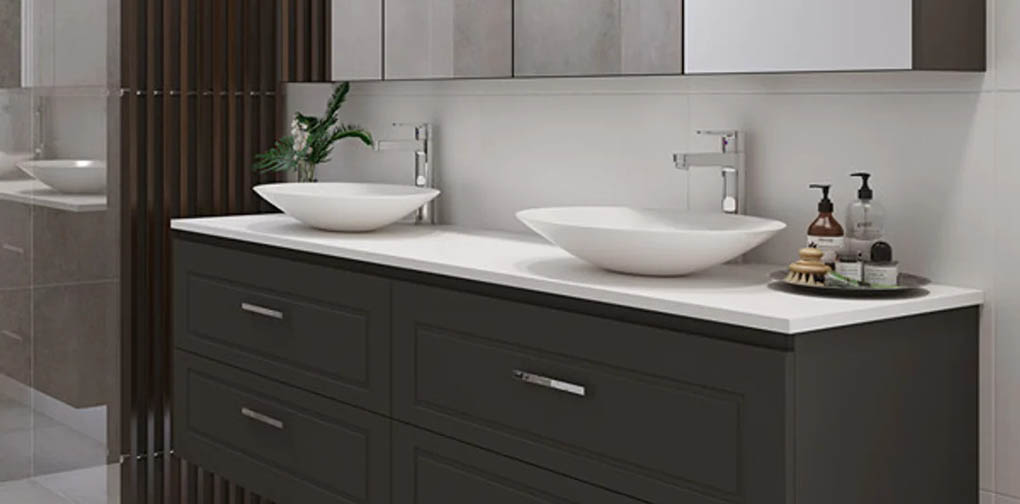
Best For: Classic, vintage, or Victorian-style bathrooms.
Modern Vanities
Modern vanities are sleek and minimalist, often featuring clean lines, smooth surfaces, and a lack of ornamentation. They typically come in neutral colors and may use materials like glass, metal, or polished wood.
Best For: Contemporary or minimalist bathrooms.
Transitional Vanities
Transitional vanities blend traditional and modern elements, offering a versatile design that can fit various bathroom styles. They often feature clean lines with some decorative touches, making them a balanced choice.
Best For: Versatile bathrooms that combine elements of different design styles.
Rustic Vanities
Rustic vanities often use natural materials like reclaimed wood and feature a rugged, unfinished look. They can include elements like farmhouse sinks and distressed finishes.
Best For: Farmhouse, cabin, or rustic-themed bathrooms.
Floating Vanities
Mounted directly to the wall without touching the floor, floating vanities create a sense of openness and space. They offer a modern look and make cleaning easier by leaving the floor area clear.
Best For: Small bathrooms or contemporary designs.
3. Material Considerations
The materials used in vanity construction affect durability, maintenance, and appearance:
Wood
Solid wood or plywood is commonly used for vanities. It’s durable and can be finished in various stains and paints. However, wood requires sealing to protect against moisture damage.
Pros: Durable, versatile, and timeless.
Cons: Can be susceptible to water damage if not properly sealed.
MDF (Medium Density Fiberboard)
MDF is a cost-effective option made from wood fibers. It can be finished with veneers or laminates to mimic the look of real wood.
Pros: Affordable and available in various finishes.
Cons: Less durable than solid wood, especially in high-moisture areas.
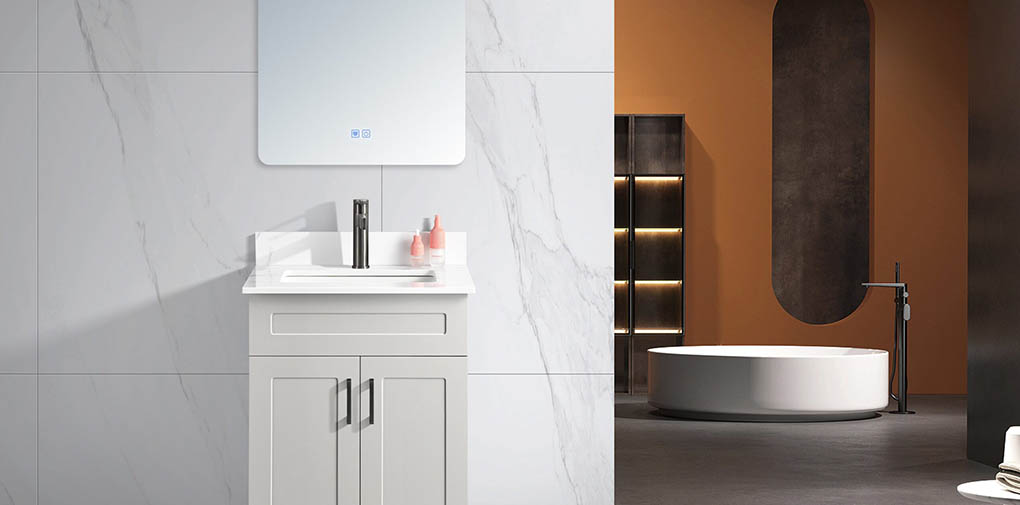
Laminate
Laminate vanities are made by applying a thin layer of plastic over particleboard or MDF. They are resistant to moisture and easy to clean.
Pros: Moisture-resistant and available in many colors and patterns.
Cons: Can chip or peel over time.
Metal
Metal vanities, often made from stainless steel or aluminum, offer a sleek, modern look. They are highly durable and resistant to moisture.
Pros: Durable, modern, and easy to clean.
Cons: Can be expensive and cold to the touch.
4. Sink Types
The type of sink you choose can affect the style and functionality of your vanity:
Undermount Sinks
Installed beneath the countertop, undermount sinks provide a seamless look and make cleaning the countertop easier.
Pros: Sleek appearance, easy to clean.
Cons: Installation can be more complex and expensive.
Drop-In (Top-Mount) Sinks
These sinks sit on top of the countertop, with the rim visible. They are easy to install and come in various styles.
Pros: Easy to install, versatile.
Cons: The rim can be harder to clean around.
Vessel Sinks
Vessel sinks sit on top of the countertop, resembling a bowl or basin. They make a bold design statement and come in various materials like glass, stone, and ceramic.
Pros: Stylish, allows for creative design choices.
Cons: Can be less practical for daily use, requires specific faucet types.
Integrated Sinks
Integrated sinks are built into the countertop, offering a seamless and modern look. They are often made from materials like quartz, solid surface, or marble.
Pros: Sleek and modern, easy to clean.
Cons: Can be expensive and difficult to replace.
5. Countertop Materials
The countertop material should complement the vanity style and be durable enough to withstand daily use:
Granite
Granite is a natural stone that offers durability and a wide range of colors. It’s resistant to scratches and heat but requires sealing to prevent stains.
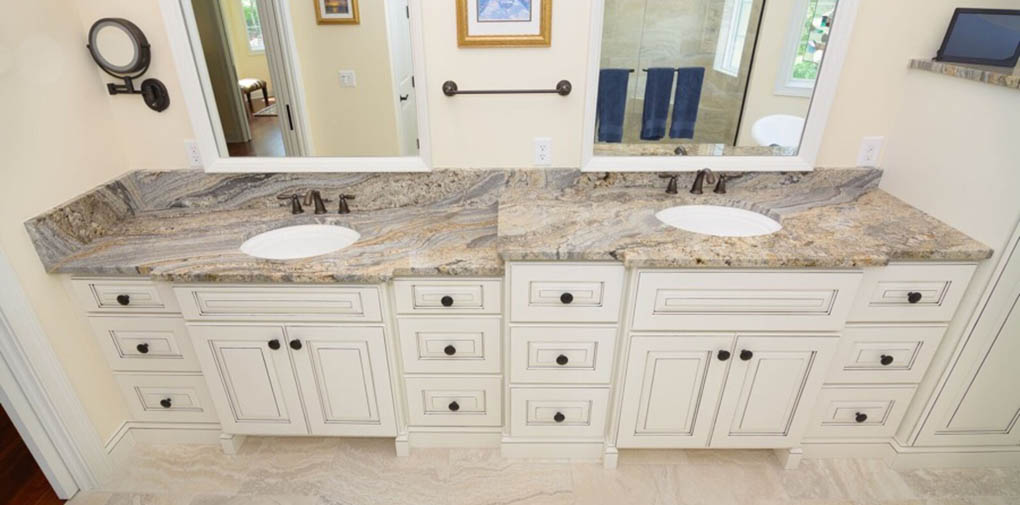
Pros: Durable, heat-resistant, variety of colors.
Cons: Requires sealing, can be expensive.
Quartz
Quartz is a manufactured material made from natural stone and resin. It’s non-porous, making it resistant to stains and bacteria.
Pros: Durable, low maintenance, available in many styles.
Cons: Can be expensive, not heat-resistant.
Marble
Marble offers a luxurious look with unique veining patterns. However, it is softer and more porous than granite, making it prone to scratches and stains.
Pros: Elegant and unique appearance.
Cons: Requires regular maintenance, can stain easily.
Solid Surface
Solid surface countertops are made from a blend of acrylic and natural materials. They are non-porous and can be molded into various shapes.
Pros: Versatile, seamless, easy to clean.
Cons: Can scratch easily, not heat-resistant.
6. Storage Needs
Consider how much storage you need. Vanities come with various storage options, including:
Cabinets
Standard cabinets offer ample space for storing larger items and can come with adjustable shelves.
Drawers
Drawers provide organized storage for smaller items like cosmetics, toiletries, and grooming tools. Soft-close drawers add a touch of luxury and prevent slamming.
Open Shelves
Open shelves offer accessible storage and can be used for displaying decorative items or easy-to-reach essentials.
7. Hardware and Fixtures
The hardware and fixtures on a vanity, such as handles, knobs, and faucets, can enhance the overall look and functionality. Choose finishes that complement the overall design, such as chrome, brushed nickel, or oil-rubbed bronze.
8. Budget Considerations
Your budget will play a significant role in determining the type and quality of vanity you can afford. Set a realistic budget and prioritize the features that are most important to you. Remember to factor in the cost of installation, plumbing, and any additional fixtures.
Choosing the perfect bathroom vanity involves balancing functionality, style, and budget. Start by assessing your space and understanding your storage needs. Then, explore various styles, materials, and finishes to find a vanity that complements your bathroom’s design. Consider practical aspects like sink type, countertop material, and hardware, ensuring they meet your daily needs and aesthetic preferences.
By taking the time to carefully select each element, you can create a bathroom vanity that not only enhances the look of your bathroom but also provides practical storage and functionality.

